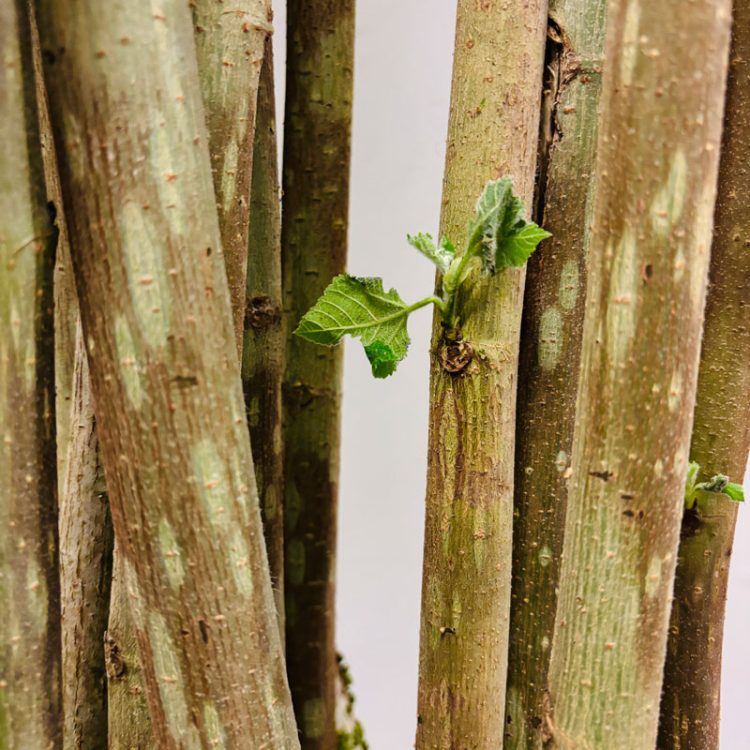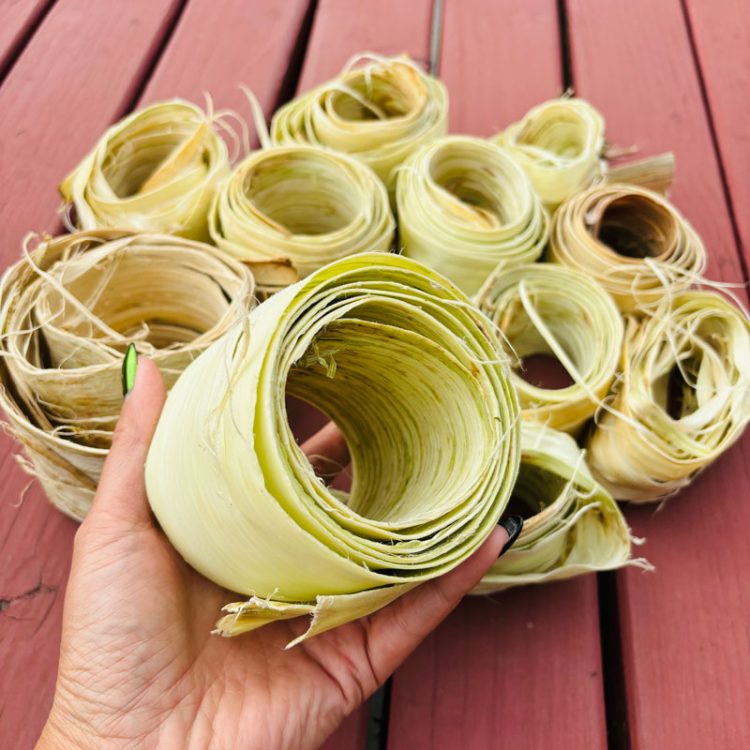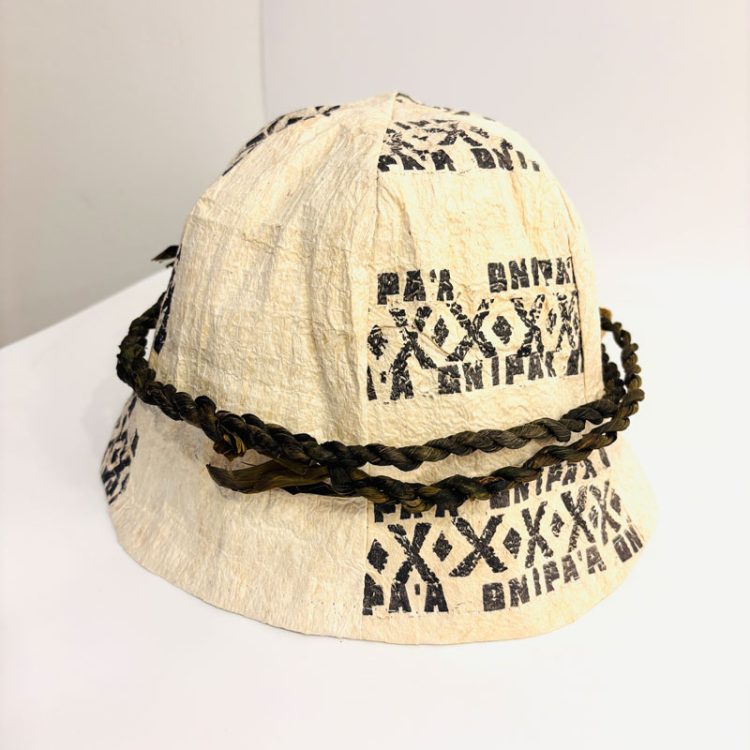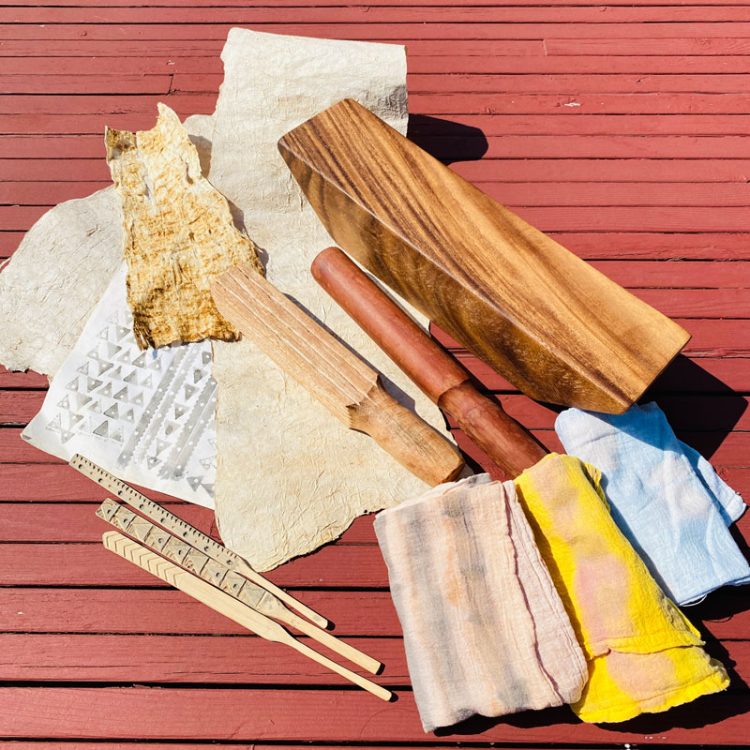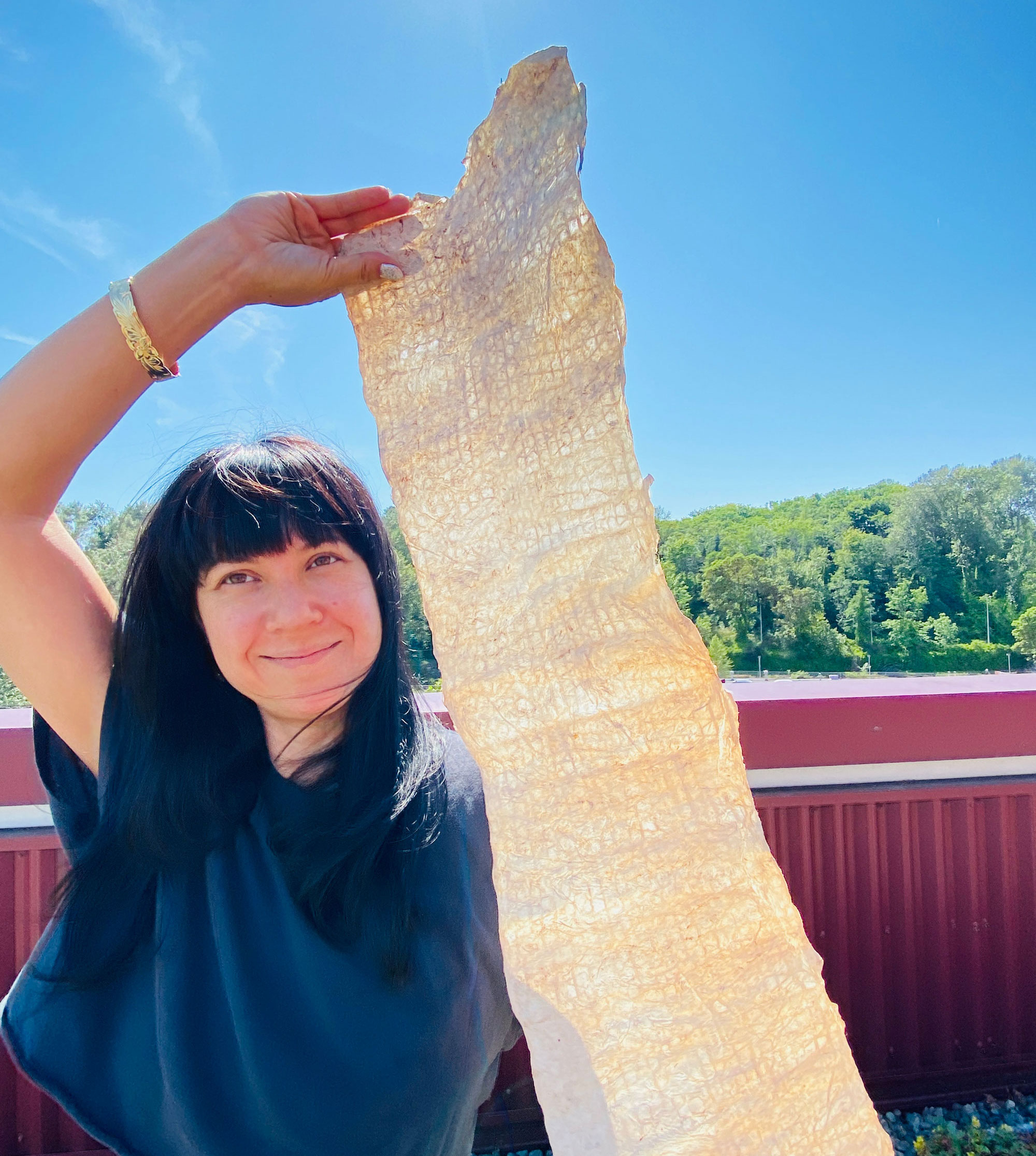
The Kuleana
of cloth
The Kuleana
of cloth
The Kuleana
of cloth
Artist Malia Peoples uses kapa clothmaking to reconnect with her heritage and share Hawaiian culture in the Pacific Northwest.
By Shin Yu Pai | Photos courtesy of Malia Peoples | Viewpoint Magazine
During the pandemic, artist Malia Peoples, ’04, dug into her Hawaiian cultural roots. Though she’d spent a lot of her young adulthood getting to know her Chinese ancestry through art and culture, Peoples felt a strong calling to explore her Hawaiian heritage through something creative and culturally relevant.
She pivoted away from her creative pursuits as a fashion and jewelry designer and pitched a bold idea for a King County arts grant: funding to spend time in Hawaii learning about “kapa”—a clothmaking tradition that aligned with her fashion background and her interest in creating wearables. Peoples won the two-year 4Culture grant and brought what she learned back to Seattle, offering workshops at King County libraries and parks as well as at the Burke Museum of Natural History and Culture.
- Kapa trees, bark and fiber used for making traditional kapa cloth.
- Kapa trees, bark and fiber used for making traditional kapa cloth.
- Kapa trees, bark and fiber used for making traditional kapa cloth.
Kapa is the traditional fabric of Hawaii, used in clothes, bedding and sometimes in ritual. Derived from the bark of the male paper mulberry tree, kapa goes through different stages of processing, like beating, stripping and stamping. While native to Asia, the mulberry is grown in the Pacific Northwest, but many of our regional trees are female. Also, ethnobotanists argue that cloth made from regional plants can’t be called kapa because of their source material. It’s similar to wine, Peoples says. “You can only call it champagne when it’s grown with grapes from a certain place.”
Though she uses the traditional tools and techniques to process mulberry bark, Peoples respects of the perspectives held by traditional culture-bearers and lineageholders. “If it’s grown on different soil, it’s considered something else,” she says. Despite these differences, Peoples shares the creative process of kapa-making with her community to increase and promote awareness of Hawaiian culture.
Peoples feels a deep calling, or "kuleana," to keep Hawaiian cultural history and traditions alive outside of Hawaii.
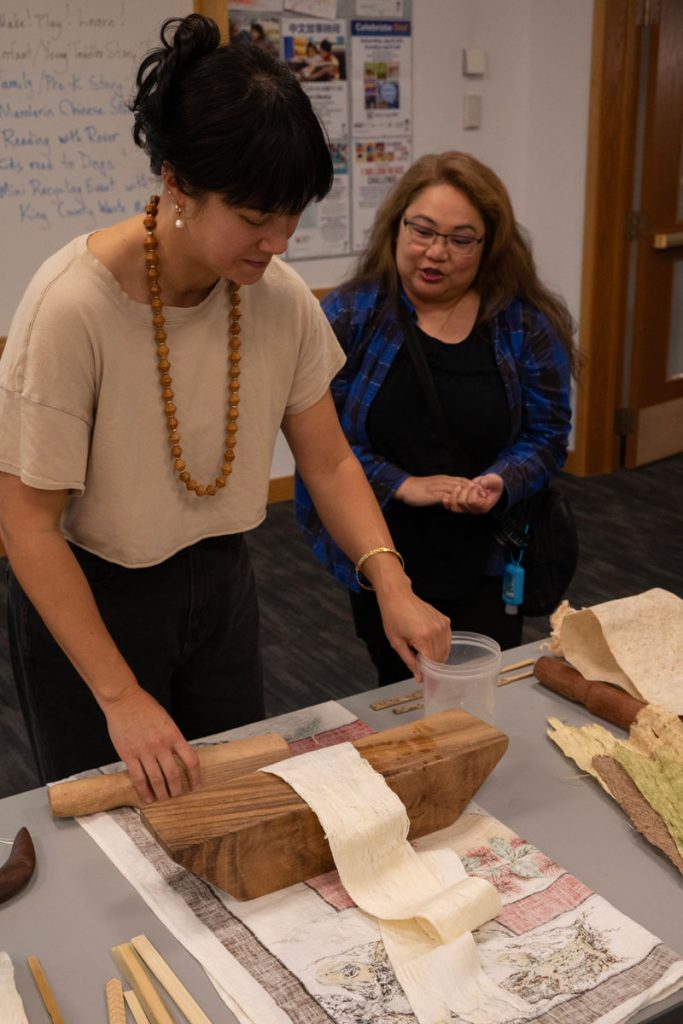
Malia Peoples demonstrates how to make kapa cloth. Her work will be on display at The Wing Luke Museum as part of an upcoming exhibition featuring visual art by Native Hawaiian creatives.
Peoples integrates history into her kapa-making presentations and teaches about colonization and its effects on the Hawaiian people and culture. She shares how kapa clothmaking became dormant for nearly 100 years after ready-made Western fabrics arrived in Hawaii. She didn’t learn this history as a young girl growing up in Olympia. Even as a community college student and later at the UW, Peoples didn’t have much access to Hawaiian cultural traditions. “I had opportunities like hula and ukulele, but no other arts,” she says. “Now I’m trying to bring more knowledge of the culture here. I want people to understand Hawaii as more than a place that you vacation in and take from. People need to know about the culture and how the land was stolen.”
As an undergraduate, Peoples studied Chinese language and literature to prepare for a a career as a Mandarin-language interpreter, but a paid post-graduate internship with China Labor Watch changed her course. She interpreted for her employer, a Chinese refugee. They collected the stories of refugees from Sri Lanka and Bangladesh. The organization worked with factory workers from China who smuggled out evidence of human rights violations. China Labor Watch reported on conditions at shoe manufacturers, toy factories that made goods for Disney and a multinational electronics manufacturer. “There were a lot of worker suicides at that time,” says Peoples. “It gave me insight into how things are made in China.”
Peoples briefly considered moving to China to set up equitably run factories. “I never ended up doing it but took a lot of these values back into my own life,” she says. These ethical commitments pair with the values that Peoples learned from her Hawaiian family. “Hawaiian Indigenous ways of being and doing are about reciprocity and how you give back,” she says. “You take what’s enough and leave enough for others who come later.”
- Original kapa cloth bucket hat designed by Malia Peoples.
- Various traditional tools used to process Hawaiian kapa cloth.
“Hawaiian Indigenous ways of being and doing are about reciprocity and how you give back. You take what’s enough and leave enough for others who come later.”
Peoples’ mother, who is ethnically Chinese and Hawaiian, grew up in Hawaii and attended Kamehameha, a school on the list of federal Indian boarding schools. The family moved to the U.S. before Peoples was born, but returned to Hawaii every few years throughout her childhood.
Though she felt a connection to the Hawaiian parts of her cultural identity, Peoples focused on studying Mandarin in high school while immersing herself in Gong Li movies. After high school, she spent a year studying at Tsinghua University in Beijing. When she was ready for to college, she found her way to the University of Hawaii where she briefly studied state history and conducted a family genealogy project before transferring to the UW.
Since the pandemic, Peoples has embraced her “Kanaka-Maoli,” or Native Hawaiian, heritage even more. Her genealogical research has led her to several family members who resisted the overthrow of the Hawaiian monarchy. “Six of my ancestors signed the petition against the annexation of Hawaii to the United States,” she says.
Peoples feels a calling, or “kuleana”nto keep Hawaiian cultural history and traditions alive outside of Hawaii. In the Northwest, Hawaiians have had a long history of influencing place and culture. Friday Harbor, the largest town on the San Juan Islands, was named in the 1850s after Po’alima, a shepherd who was also known as Peter Friday (Po’Alima means “Friday” in Hawaiian). Native Hawaiian pioneers worked in the fur trade throughout the Northwest, building some of the region’s earliest trading posts. They labored as canoe boatmen, carpenters, herders, farmers and watchmen. While some returned home, others stayed and joined local Indigenous communities.
Peoples’ current project is building a library of linoleum cuts used for block printing. Featuring traditional Hawaiian patterns, the stamps will be used to rejuvenate cloth and clothing while creating an interactive experience for students who use them. “The diasporic community is hungry for that connection—there’s a lot that we’ve lost,” Peoples says. “They are just reawakening in Hawaii to reclaiming these practices. We need to keep these practices and stories alive.”
On the Hawaiian notion of kuleana, Peoples says, “It means a responsibility or privilege. Everyone has different things they are supposed to do in their life. My kuleana is to teach and uplift people. To help others be more creative without leaving a huge footprint.”
Find Malia Peoples’ work on display at The Wing Luke Museum as part of the DISplace exhibit beginning June 13.
